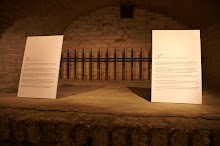Ignoring the heat, you lift the stone to count the ants, bracing yourself for what you might find. You will publish your research and it will be discussed by eminent ecologists and scientists. Surely someone will know what to do.
You look out across Hawaii’s scattered islands. This paradise you call home is the planet’s most isolated archipelago. In the seventy million years since its creation, a new species arrived only every hundred thousand years.
But then your Polynesian ancestors came and settled the islands, hunting the bright-plumed birds to furnish their king with feathers until there were none left. The pigs they brought colonised forests, damaging trees and rooting up the forest floor.
In 1778, Captain James Cook took news of your islands to Europe. Traders came, bringing diseases which reduced your people’s numbers by a fifth. New settlers cut down forests and brought animals and plants from their native lands.
Today half of the islands’ one hundred and forty bird species are extinct. Nearly a third of the twenty thousand species of animals and plants are alien. Like the forest grasses, tree snakes and carnivorous snails, the Argentine ants you study pose yet another risk to Hawaii’s diminishing ecosystem.
skip to main |
skip to sidebar







According to the UNFPA the population of the world increases by 1.2% a year.
That's 235,000 a day.
That's 235,000 a day.
GENE MEME is a blog, art installation and outreach programme about world population.
The GENE MEME art installation took place in the Crypt Gallery in London from 9 June to 20 June 2010.
The GENE MEME art installation took place in the Crypt Gallery in London from 9 June to 20 June 2010.
GENE MEME was supported by a debate asking what should be done about rising population.



Links to posts
- Ancestral Pueblo culture
- Angkor
- Antioch
- Bodmin Moor
- Cahokia
- China’s Great Leap Forward
- Classical Greece
- Easter Island
- Ephesus
- Fatehpur Sikri
- GENE MEME
- Hawaii
- Hispaniola
- Holodomor
- Illinois
- Juana Maria
- Kaskaskia
- Madagascar
- Minimata
- North Korea’s ‘Arduous March’
- Pitcairn Island
- Rabbits in Australia
- Rwanda
- Smallpox
- St Kilda
- St Matthew Island
- Sugar
- The Aleuts
- The American Dustbowl
- The ancient Olmec civilisation
- The Aral Sea
- The burial of Riez
- The collapse of the Nasca
- The decline of Bruges
- The deforestation of Ethiopia
- The extinction of the Moa
- The Florida Everglades
- The Gambier trade triangle
- The great civilisation of Sumer
- The Harappan Culture
- The Irish potato famine
- the last Nicoleňo
- The last passenger pigeon
- The Mayan civilisation
- The pleistocene extinctions
- The Sahel
- The Vikings in Greenland
Search This Blog

